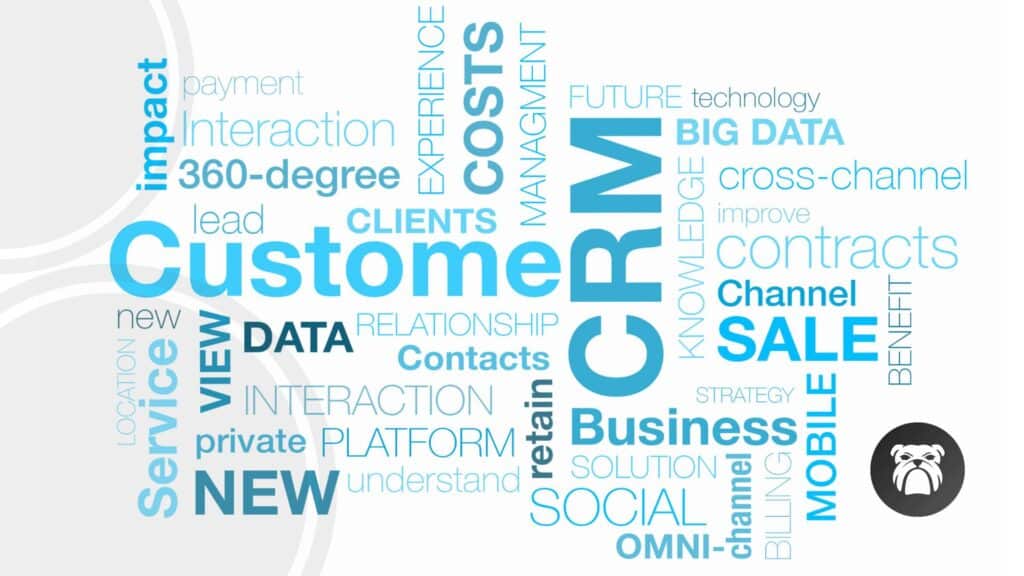Introduction to CRM Technology
Customer relationship management (CRM) technology has become an invaluable tool for businesses seeking to better understand their customers, improve satisfaction, and drive sales growth. By consolidating customer data into a central database, CRM systems give sales, marketing, and service teams a holistic view of each customer. This unified approach is key for providing personalised and consistent experiences across every interaction.
For example, access to a customer’s purchase history and support cases empowers sales representatives to have more meaningful conversations and recommend relevant products. Meanwhile, customer service teams can quickly pull up the entire record to resolve issues faster. Marketing is also made easier and more effective when campaigns and messaging can be tailored based on individual interests and behaviours.
The focus of this blog post is to explore some of the latest advancements being made specifically in on-premise CRM solutions. On-premise systems are installed directly on a company’s servers, rather than being cloud-based. This allows for more customization and control over data security. While cloud CRM offers advantages like automatic updates, on-premise solutions provide flexibility for businesses with specialised needs or strict regulations around customer data.
In the sections that follow, we will compare on-premise and cloud CRM, highlight some of the newest capabilities being built into on-premise systems, and outline key factors to consider when upgrading.
On-Premise CRM vs. Cloud-Based CRM
On-premise CRM systems are installed and run on a company’s own servers and computing infrastructure. This gives companies full control over the CRM software, hardware, data storage, security, customizations, and updates. However, on-premise CRM requires a large upfront investment in servers and IT infrastructure, as well as ongoing maintenance and support costs.
Cloud-based CRM systems are hosted on remote servers owned by the CRM vendor. Companies access cloud CRM via the internet, usually through a web browser. Cloud CRM typically has lower upfront costs and is easier to scale up or down as needed. However, companies have less control and customization options with cloud CRM. Data security is also a common concern with cloud solutions.
Key Differences
- Location of hardware and software – On company servers vs. vendor’s remote servers
- Upfront and ongoing costs – Higher for on-premise, lower for cloud
- Customization and control – Greater for on-premise, more limited with cloud
- Flexibility and scalability – Cloud is typically easier to scale up or down
- Security and compliance – Often a bigger concern with cloud solutions
Benefits of On-Premise CRM
Some key benefits that make on-premise CRM attractive for many businesses include:
- Full control over data, hardware, security, customizations
- Ability to tailor the system to unique business needs
- Often meets security/compliance needs better than cloud
- No reliance on internet connectivity to access the system

Recent Advancements in On-Premise CRM
On-premise CRM systems have seen rapid innovation in recent years with the integration of cutting-edge technologies like artificial intelligence (AI) and machine learning. These advancements allow businesses to gain deeper insights into customer data stored within their on-premise CRM platforms.
Integration of AI and Machine Learning
One of the most significant advancements has been the addition of AI and machine learning capabilities. On-premise CRM platforms can now intelligently analyse customer data to detect meaningful patterns and predict future behaviours. This allows sales and marketing teams to better personalise messaging, provide product recommendations, forecast revenue, and more.
For example, machine learning algorithms can segment customers based on common attributes and behaviours. Teams can then create targeted marketing campaigns for each customer segment leading to higher conversion rates.
Enhanced Platform Capabilities
Along with AI integration, on-premise CRM platforms have seen improvements across several key areas:
- Mobile Accessibility – On-premise CRM apps for iOS and Android provide teams access to customer data from anywhere.
- Security – Multi-layered security protocols better safeguard sensitive customer data stored on-premise.
- Integration – Open APIs allow on-premise CRM platforms to integrate with complementary martech tools.
- Customization – More flexible configuration options allow platforms to be tailored to unique business needs.
- Scalability – Cloud-based components scale storage and bandwidth as per changing data requirements.
- UX Design – Intuitive interfaces improve internal user adoption across sales and marketing teams.
- Analytics – Embedded BI tools provide insights through interactive dashboards and reporting.
- IoT Integration – Collect and analyse data from connected devices, wearables, etc.
- Chatbots/Voice – Natural language interfaces powered by AI improve customer experience.
These cutting-edge integrations allow on-premise CRM platforms to deliver greater value in managing customer relationships while providing businesses with competitive advantages.
Benefits of Adopting the Latest On-Premise CRM Advancements
On-premise CRM solutions give businesses full control over their customer data. Unlike cloud-based systems where data is stored on external servers, on-premise CRM allows companies to keep sensitive customer information in-house. This increased data security and privacy is a major advantage for many organisations, especially those in highly regulated industries like healthcare and finance.
Tailored Systems and Enhanced Security
On-premise CRM can be fully customised to a company’s unique needs. Everything from the user interface to integrations with other business software can be configured as required. Companies also have the flexibility to control software upgrades and maintenance schedules. In addition, on-premise solutions allow for more advanced security measures like data encryption and user access restrictions to safeguard customer information.
Competitive Edge from Latest Advancements
Staying updated with the latest CRM advancements through on-premise solutions can give companies a distinct competitive edge. Cutting-edge features like AI-powered analytics, IoT integrations, and omnichannel engagement capabilities can greatly optimise sales, marketing and customer service efforts. Rather than waiting for cloud vendors to roll out updates, on-premise users can immediately take advantage of new innovations to improve efficiencies.
Some key metrics that can demonstrate CRM’s impact on profit growth include:
- Increased lead conversion rates
- Higher sales win rates
- Improved customer retention
- Greater marketing ROI
By generating actionable customer insights, driving sales productivity, and strengthening customer relationships, advanced on-premise CRM systems play a vital role in boosting revenue and profits.

Considerations When Upgrading On-Premise CRM
Upgrading an on-premise CRM system can provide significant benefits, but it also comes with some important considerations. As with any major technology change, having a thoughtful plan is key to ensuring a smooth transition.
Migrating Data to New Systems
One of the biggest challenges with upgrading CRM software is migrating existing customer data to the new system. Depending on the amount of data and integration with other systems, this process can be complex. Companies should plan for data mapping, testing data migration, and allowing time for any data cleanup needed post-migration. Outside consultants are often leveraged to assist with planning the migration and validating the data once moved to the upgraded CRM.
User Adoption Strategies
An upgraded CRM brings new features and likely some changes to workflows. Driving user adoption ensures employees fully utilise the capabilities of the new system. Companies should develop training programs and materials tailored to the various user roles. Hands-on training workshops, online video tutorials, user guides, and post go-live support resources will facilitate adoption. Further, change management techniques like executive sponsorship, user feedback channels, and community building can smooth the transition.
Integration with Existing Infrastructure
To maximise value, the new CRM needs integration with complementary systems like marketing automation, ecommerce, and billing. IT teams should map out current integration points and plan how these will function post-upgrade. New APIs and connectors may be required. Allowing time for integration development and testing is vital before launch. A phased rollout can help catch any integration issues before broadly enabling new automations. Upgrading a CRM is a major undertaking but well worth the effort for enhanced customer insights. With careful planning for data migration, user adoption, and integrations, companies can fully leverage new innovations in CRM to build customer loyalty and strategic growth.
Conclusion
As we have explored in this blog post, on-premise CRM technology has seen remarkable advancements in recent years. The integration of AI, machine learning, enhanced security features, better integration capabilities, increased customization, improved scalability, UX enhancements, advanced analytics, IoT integration, and voice/chatbot capabilities have transformed legacy on-premise systems.
These innovations enable businesses to have more control over their customer data while also tailoring CRM solutions to their unique needs. On-premise systems with the latest features can provide businesses a competitive edge by empowering teams with actionable insights to nurture customer relationships and drive growth.
However, upgrading CRM systems can be challenging without proper planning. Businesses need to carefully consider data migration complexities, user adoption strategies, training requirements, and integration with existing tech stacks before implementing new on-premise solutions.
Key Takeaways
- On-premise CRM innovation is accelerating with AI, ML, analytics, and more to improve customer experiences.
- New features like enhanced security, better integration, and customization provide key benefits.
- Upgrading requires planning around migration, user adoption, training, and integration.
Bulldogs Digital
We encourage businesses to actively explore these on-premise CRM advancements to transform customer relationships and fuel growth.
For tailored advice, implementation support, and more CRM resources, contact the experts at Bulldogs Digital today!






